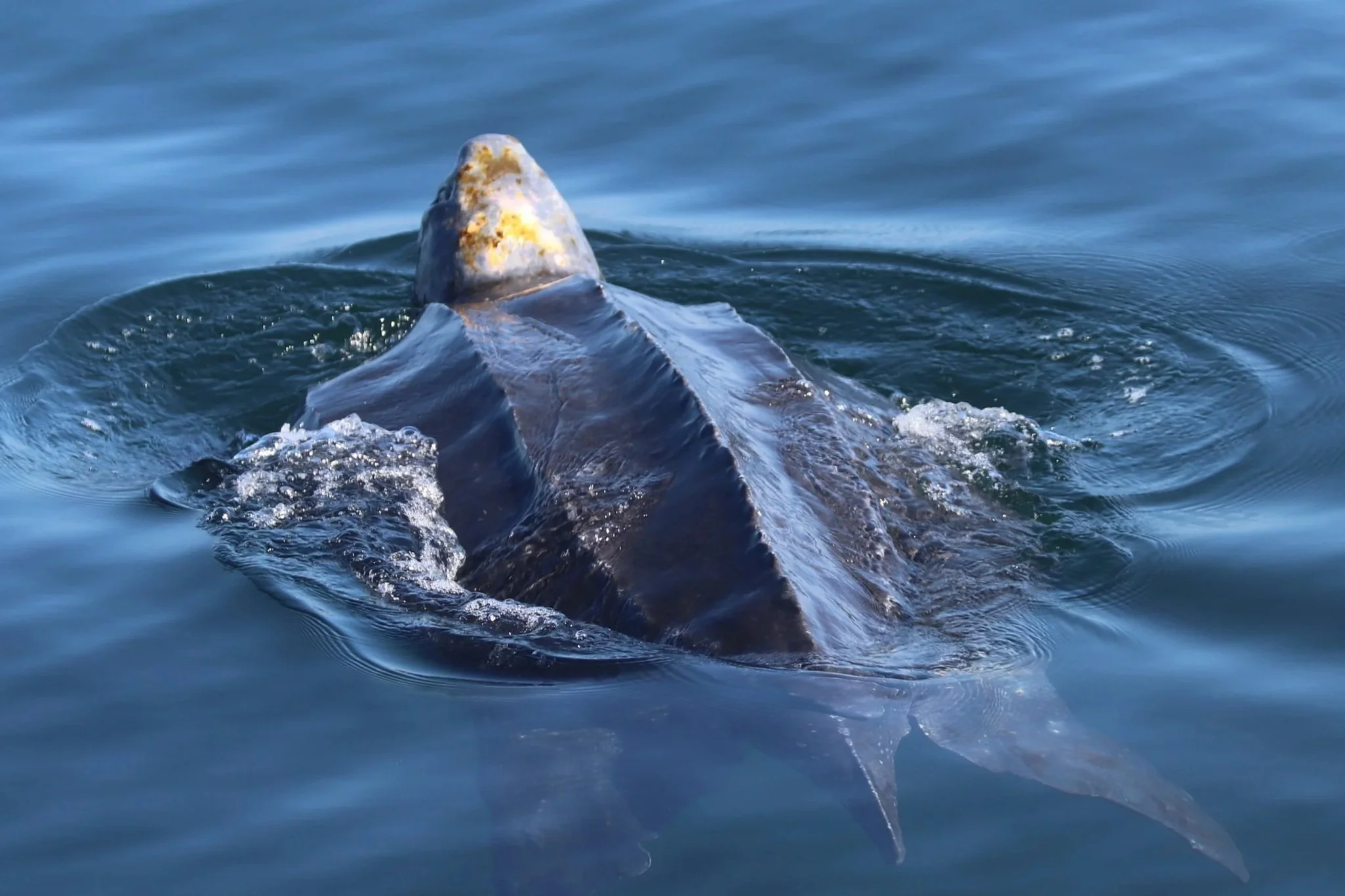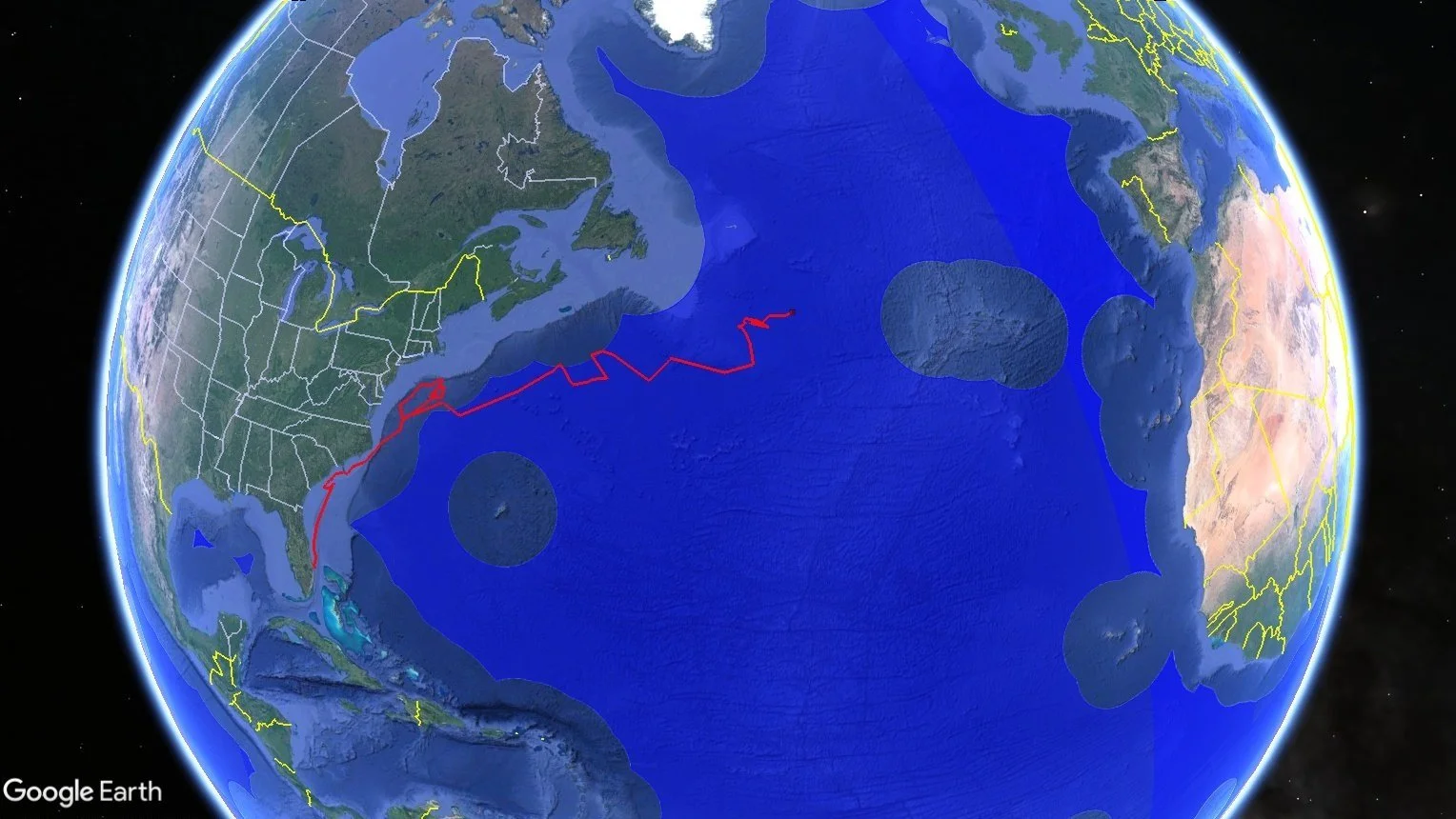In October of 2021, Upwell and our partners from the National Oceanic and Atmospheric Administration (NOAA) tagged one of the largest leatherbacks ever encountered in the California Current foraging zone weighing in at 1,419 pounds! This massive male leatherback was dubbed “Bumpy” because of the distinctive bumps on the rear of his carapace, which were likely caused by a prior ship strike.
This encounter with Bumpy marks the first ever “double-tagging” of a leatherback off the coast of California, which entails deploying both satellite and acoustic tags. NOAA researchers previously tagged Bumpy with a satellite-linked transmitter in 2016, but satellite tags typically only last a year or less and shed naturally over time (the satellite tag deployed on Bumpy in 2016 was gone by the time we encountered him again in 2021). In addition to the new satellite tag, our team deployed an acoustic tag on Bumpy in 2021 as part of the “double-tagging” process. This was the first-ever acoustic tag deployed on a leatherback turtle in the Pacific!
Upwell and NOAA researchers hope to glean valuable insights over the next year from the satellite tag, which will show arrival times to key habitats, information about fine-scale movements, and potential overlap with fisheries. The tag may even reveal information about foraging areas and possible breeding locations on the western side of the Pacific. Yet it may be Bumpy’s acoustic tag that notifies our team of his eventual return to the California Coast in the future. Acoustic tags use far less energy, resulting in significantly prolonged battery life. This means we will continue to obtain presence data each time Bumpy passes a receiver, long after he sheds this season’s satellite tag.
Whereas satellite tags transmit in-depth data about location, vertical dive profiles and horizontal behaviors (e.g. speed, orientation, turning angle), as well as environmental variables (e.g. temperature, salinity, chlorophyll) to satellites orbiting the earth, acoustic tags communicate directly with receivers, strategically placed within critical habitats or areas of potential overlap with human impacts. Many of the acoustic receivers deployed along California’s coast have been used to detect organisms such as salmonids, sturgeons, and sharks. Upwell and NOAA will now be able to use receivers to detect leatherback presence as well, allowing our team to keep tabs on Bumpy’s comings and goings over a longer time span.
Photo: John Douglas, MLML. Map: Scott Benson, NOAA.
So, what have we learned from Bumpy’s tags so far? Bumpy is now 345 miles southwest of Point Conception, California and appears to be moving deliberately in a southwest direction. Bumpy may be subject to greater risk of fisheries bycatch now that he is outside of the US Exclusive Economic Zone (EEZ) where stronger regulations protect leatherbacks in contrast to international waters. He still has a long way to go on his trans-Pacific journey; typically leatherbacks remigrate only every three to five years. However, Bumpy’s excellent body condition this season may signal his readiness to embark on the epic migration back to the West Pacific and mate in the warm waters off leatherback nesting beaches in Indonesia, Papua New Guinea and the Solomon Islands. Upwell will continue to monitor Bumpy’s travels and wish him many safe returns!
Sign up for Upwell’s e-newsletter below for more updates on Bumpy and other exciting advances in sea turtle conservation






